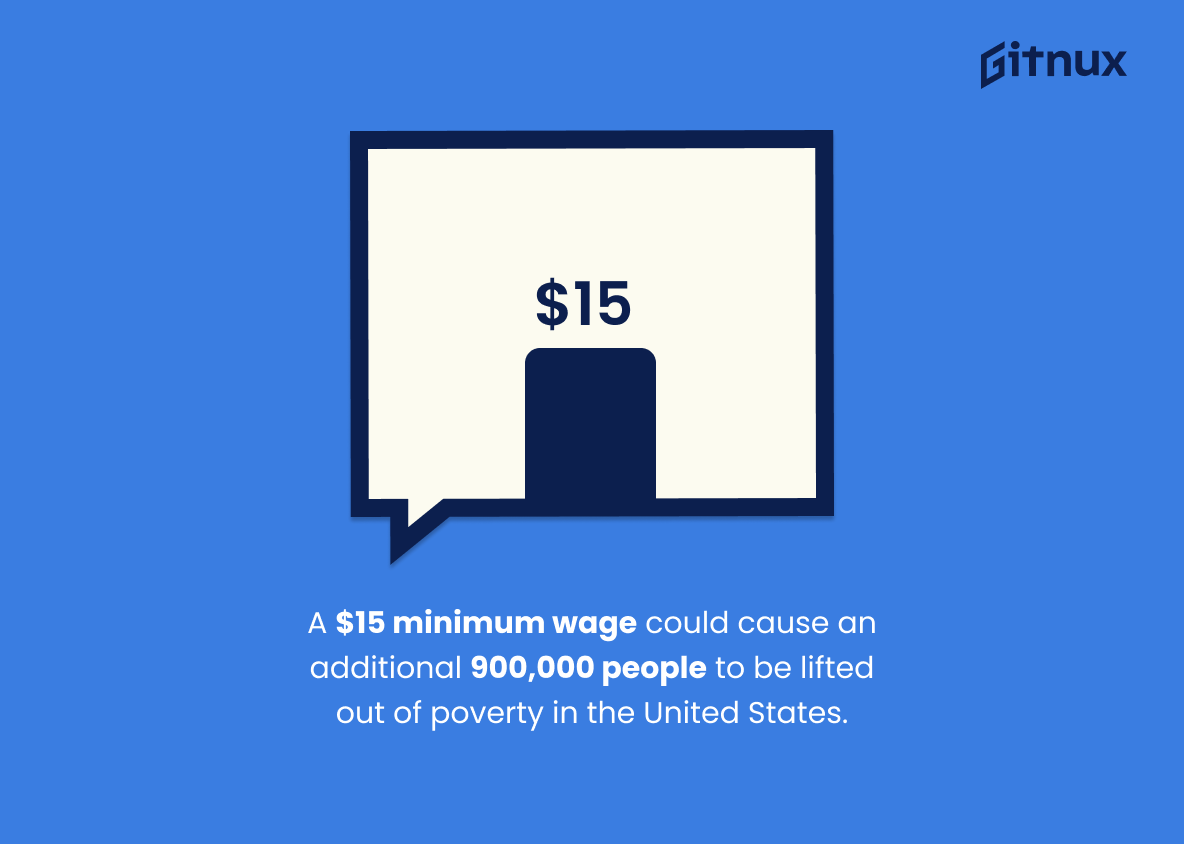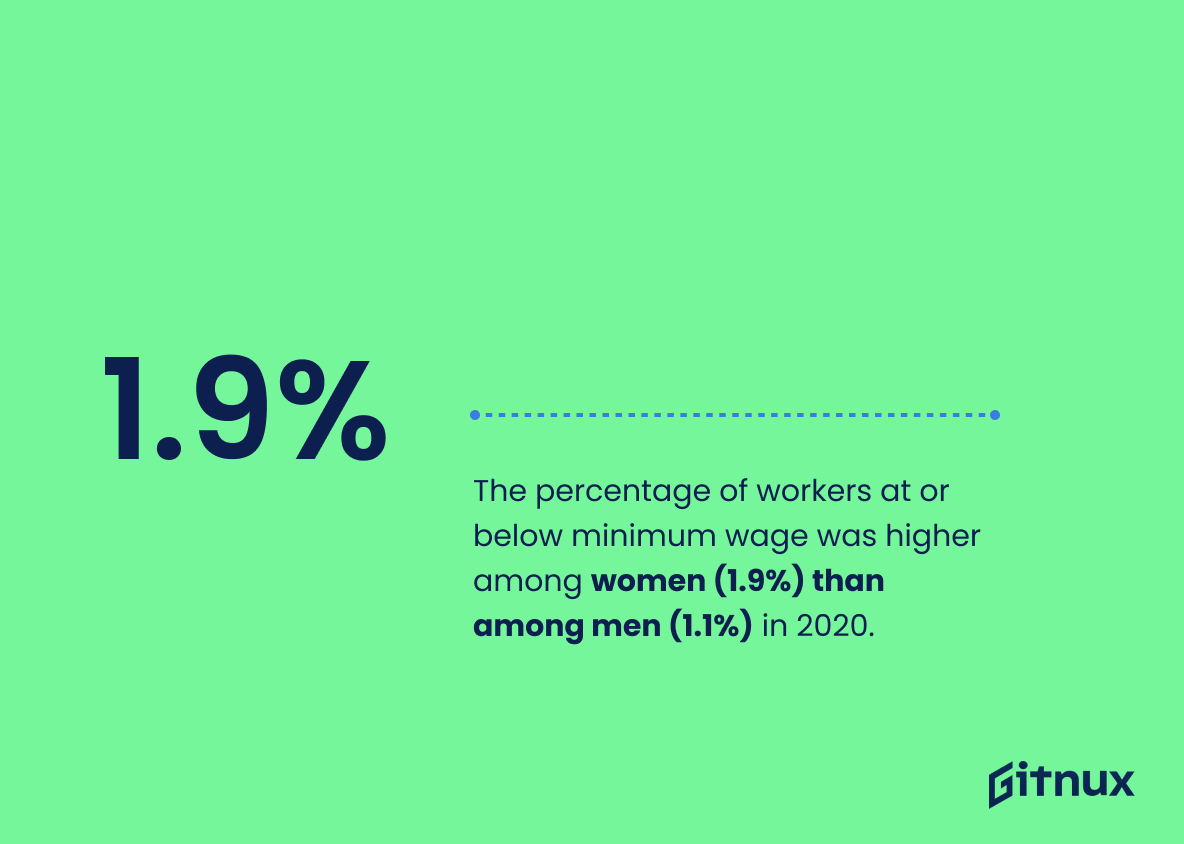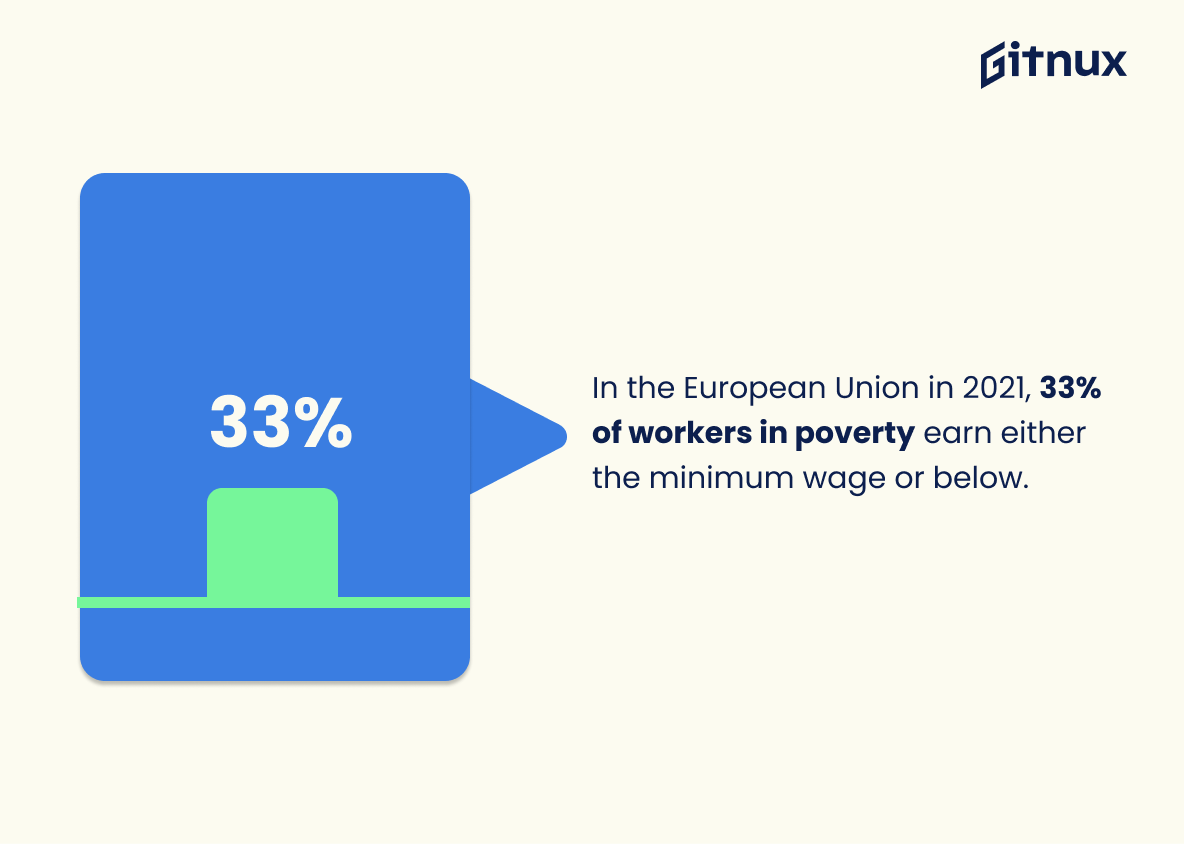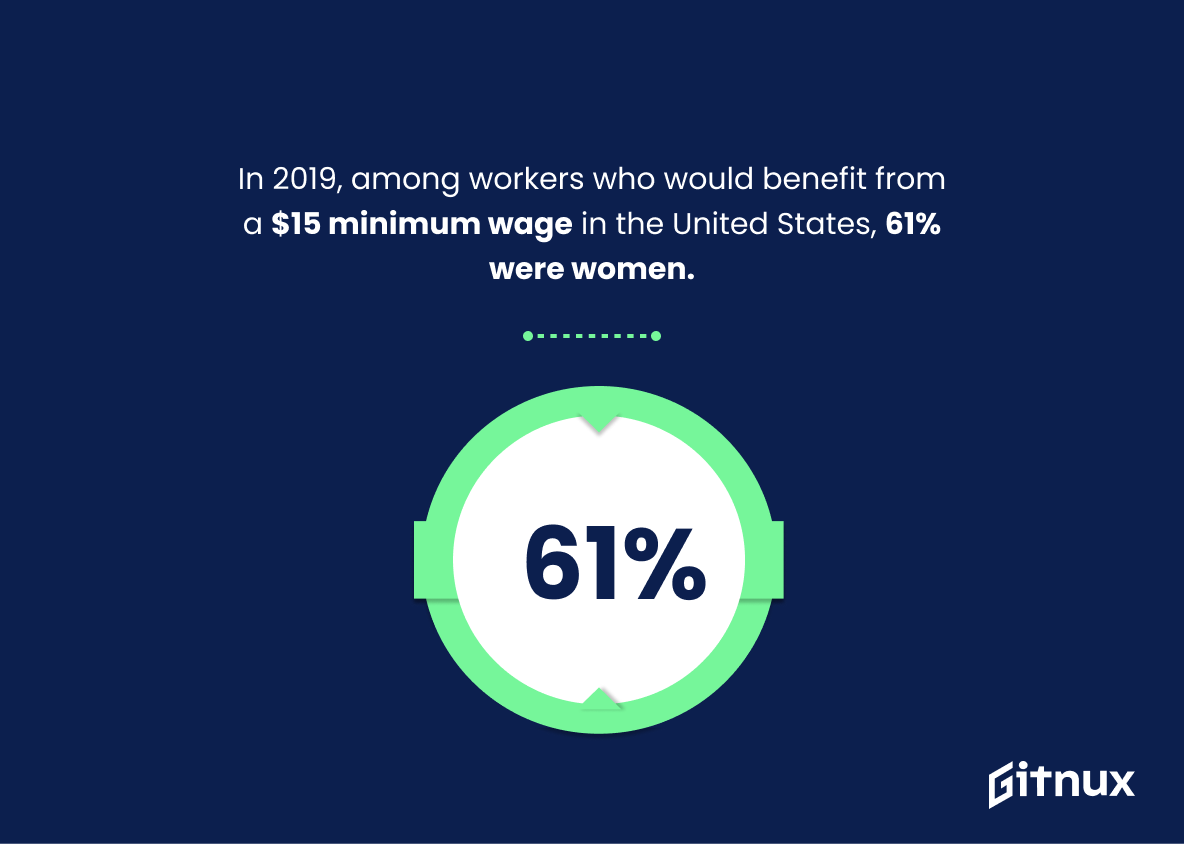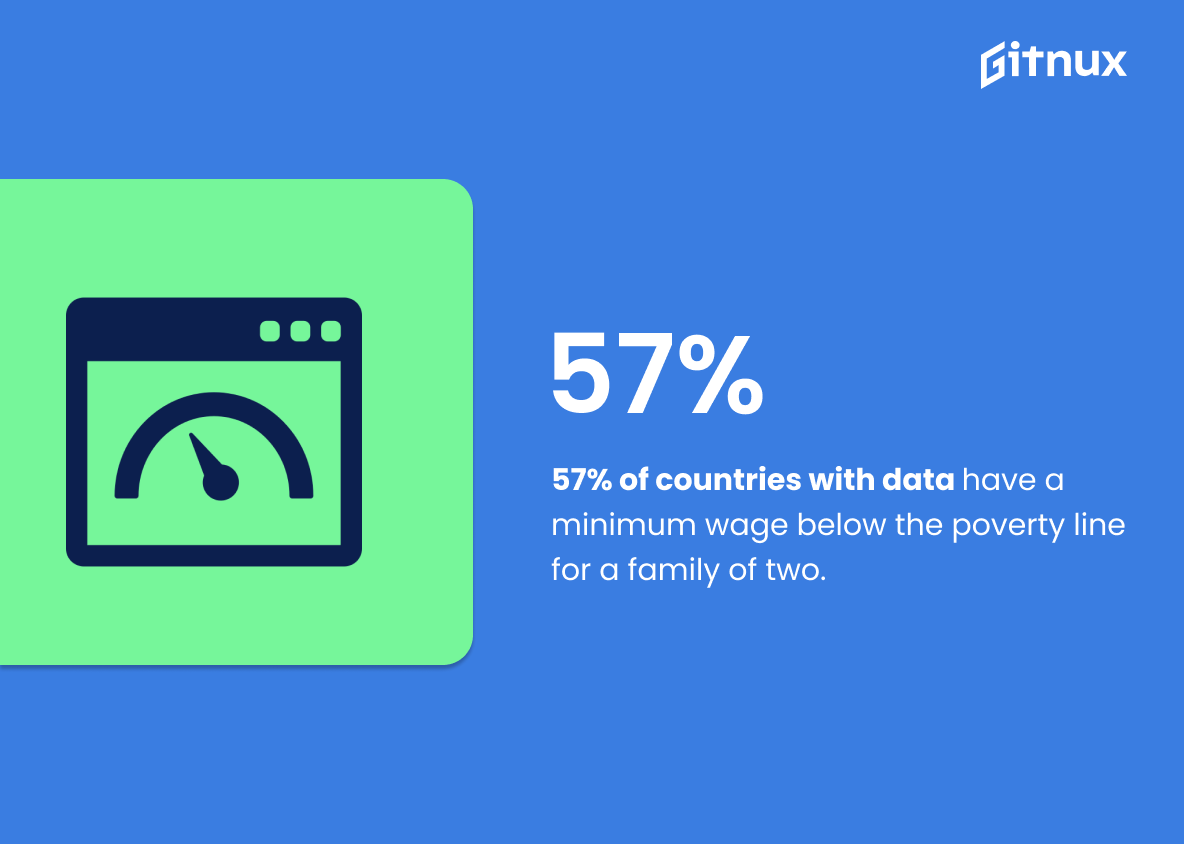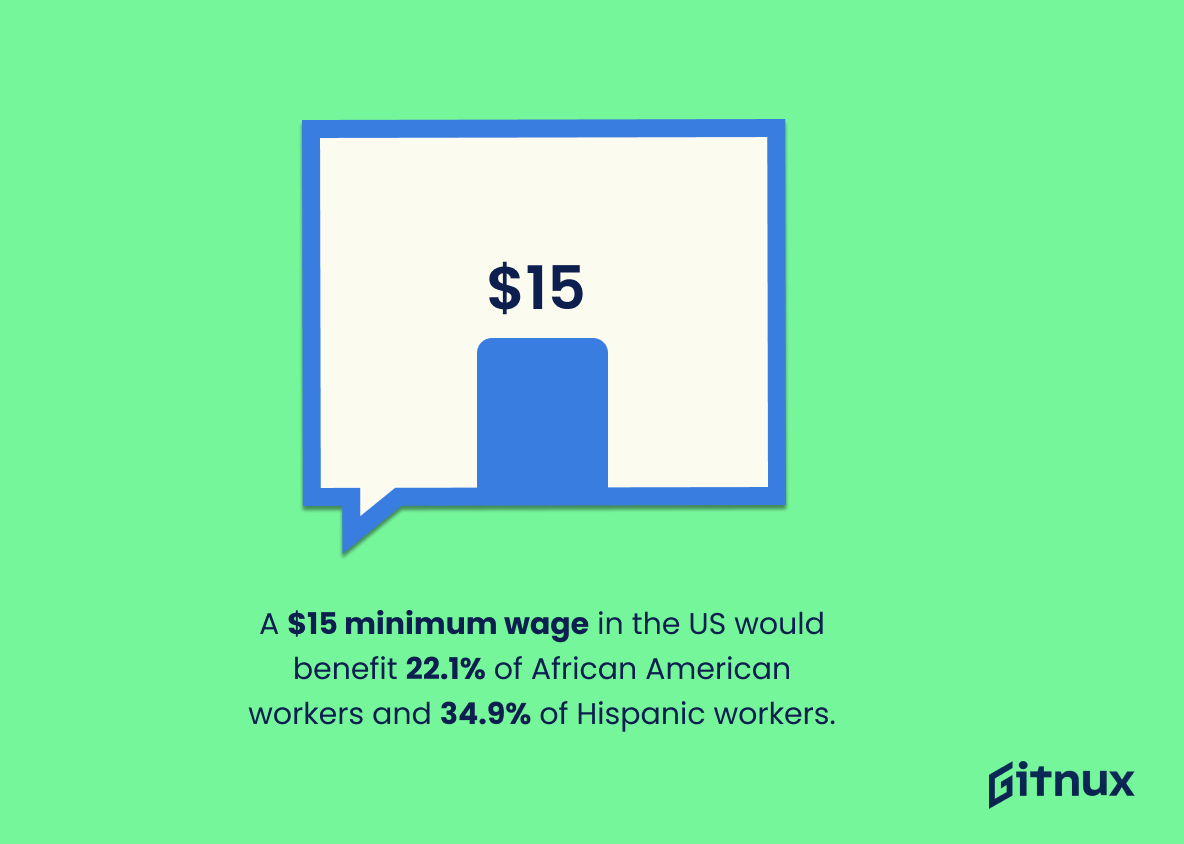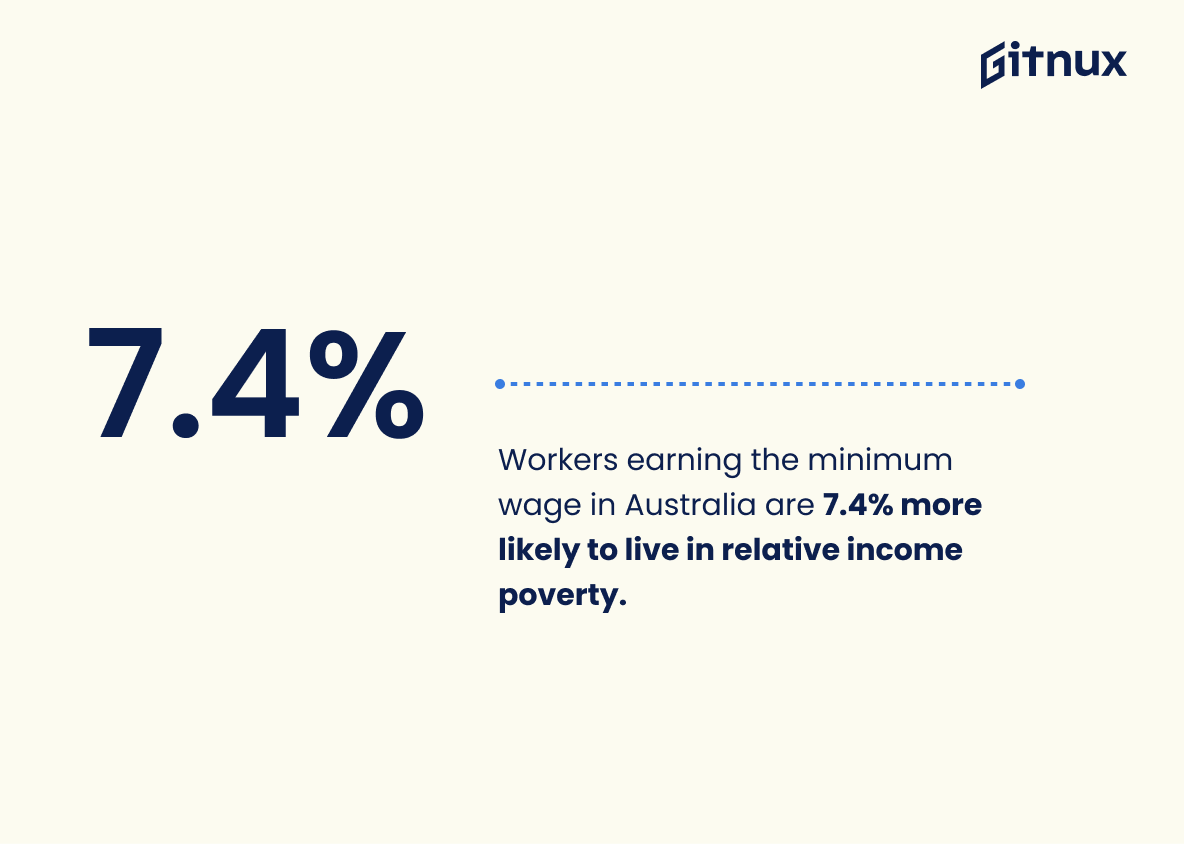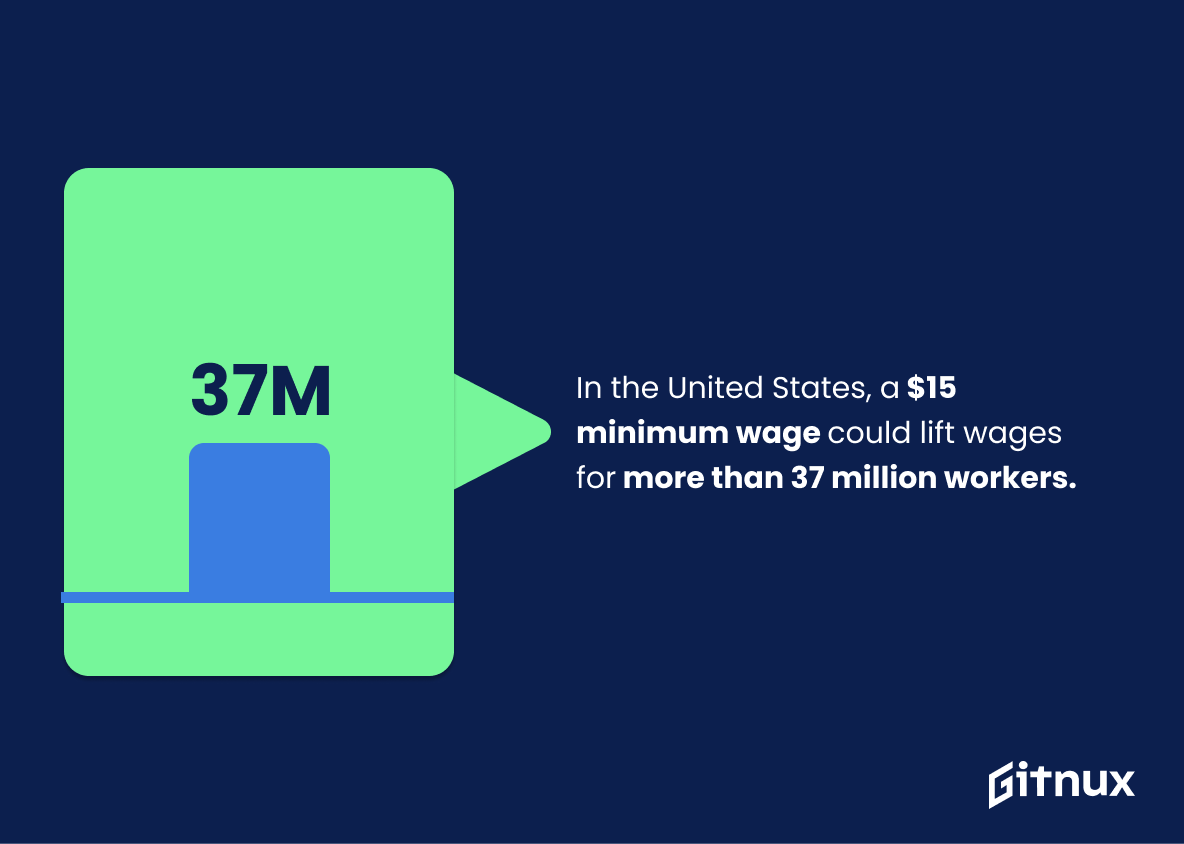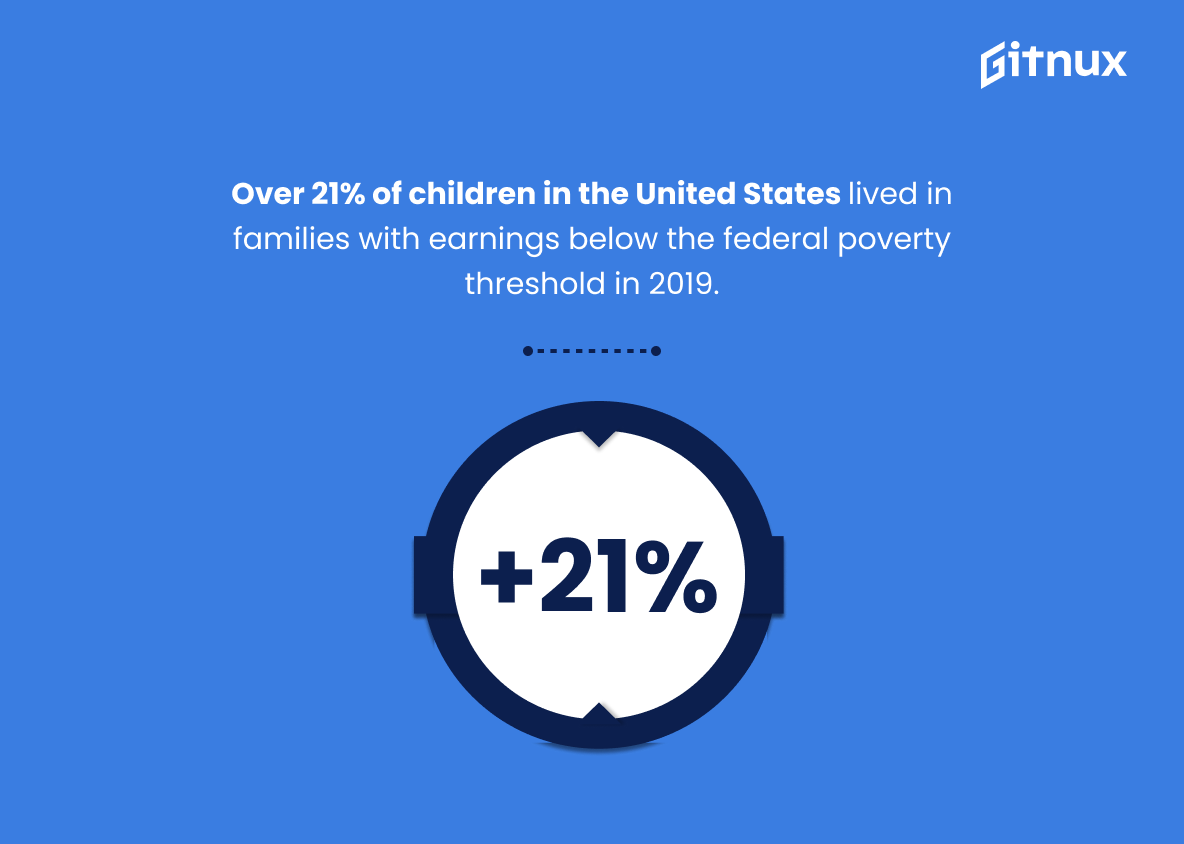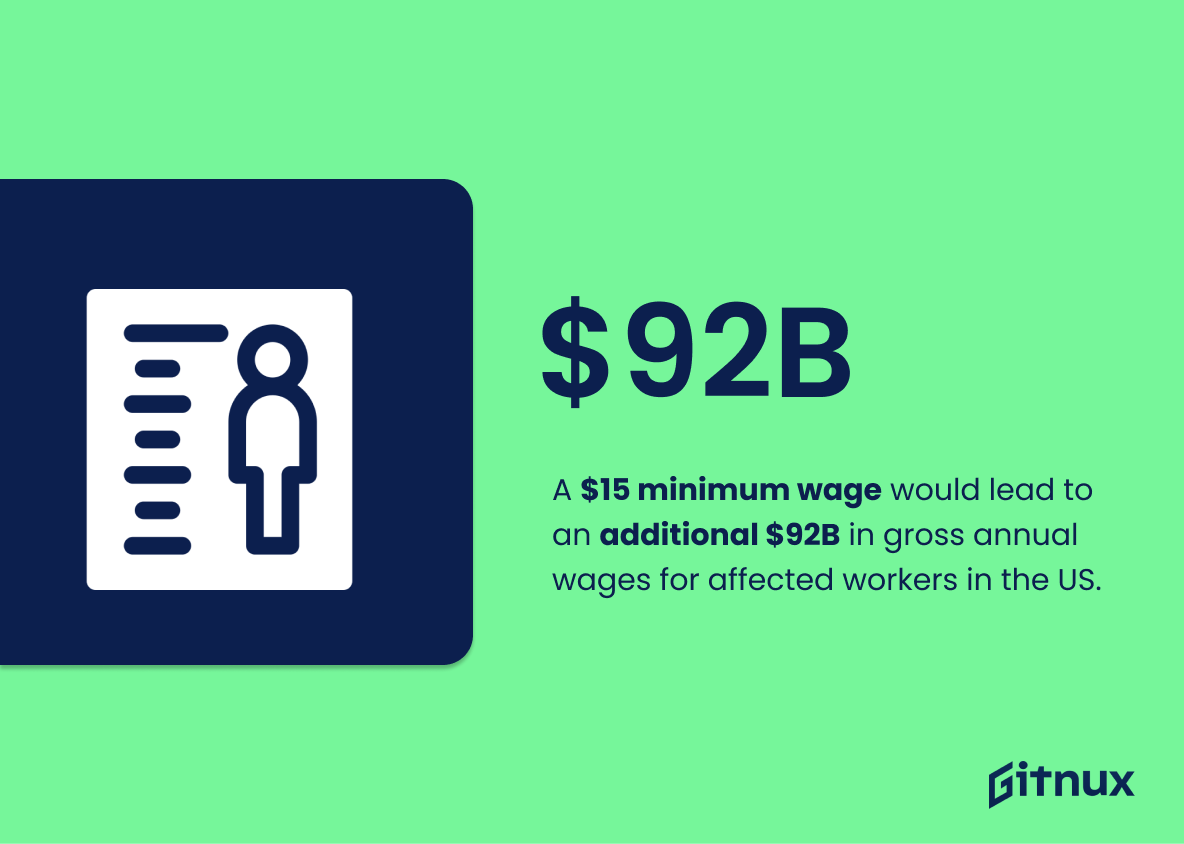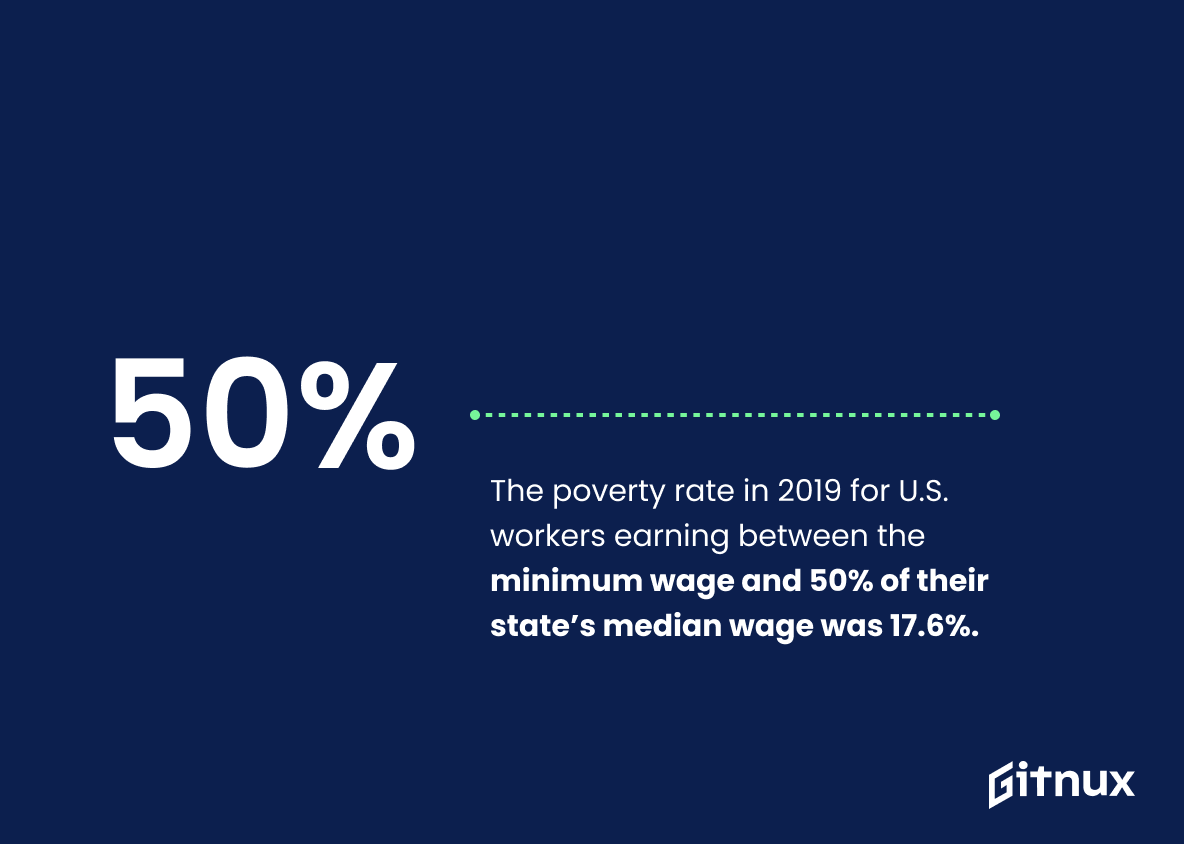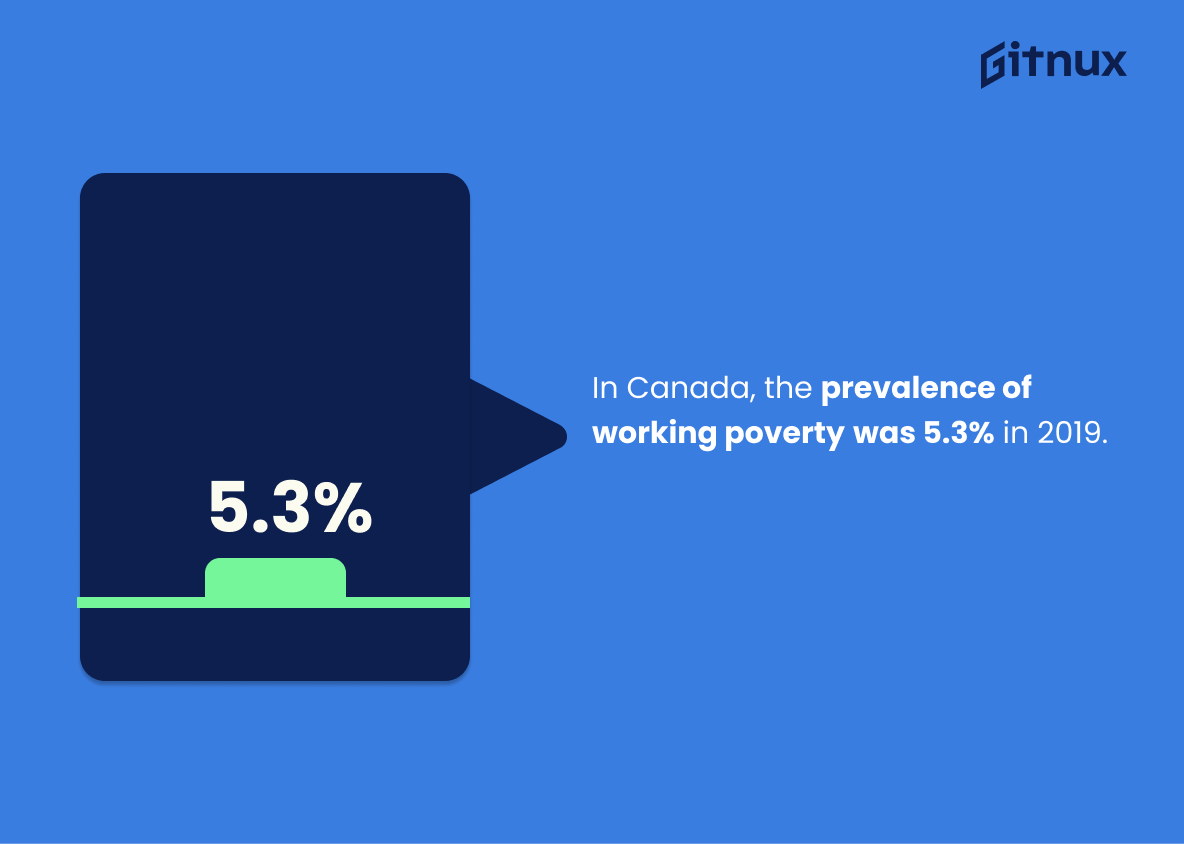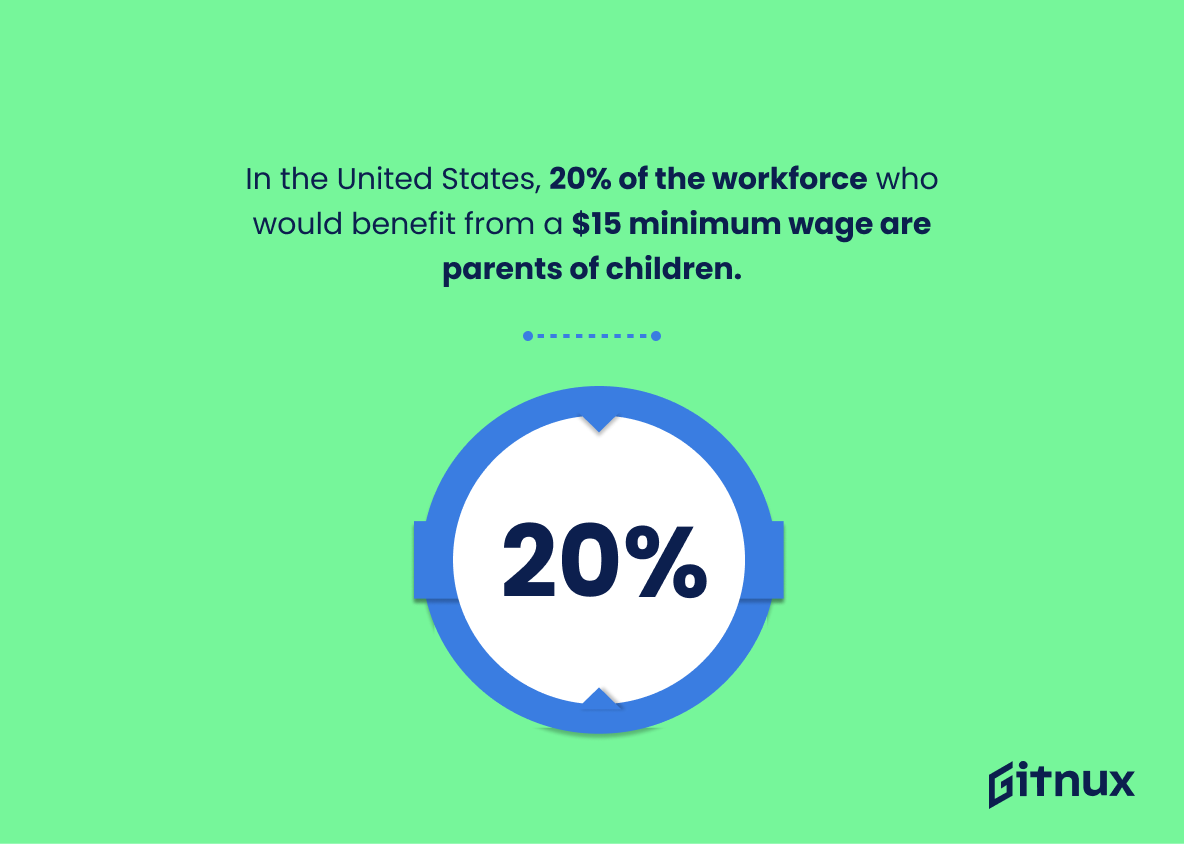The statistics on minimum wage and poverty are alarming. In the United States, an estimated 21.3% of workers earning the federal minimum wage or below lived in poverty in 2019, while among OECD countries, the US ranks 11th highest for its adjusted cost of living rate. Furthermore, only 1.5% of hourly workers earned at or below this level last year – a figure that could be drastically reduced with a $15 increase to the national minimum wage as it would lift 900,000 people out of poverty according to estimates from The Congressional Budget Office (CBO).
Women were more likely than men to earn wages at or below this threshold; 1.9% compared to 1.1%. This is also true across other parts of the world such as Europe where 33% percent live under these conditions and developing nations which see a 2-2/9 reduction in their respective poverty rates when there’s an 10 % rise in their own local minima respectively . Parents too make up 20 %of those who’d benefit from such increases here ,while Australia sees 7/4 times higher chances for relative income deprivation amongst them .In terms of absolute figures ,the CBO predicts 37 million Americans will receive additional gross annual wages amounting upto 92 billion dollars if they get paid 15$ per hour while EU citizens can expect €332-€2202 depending upon country specific regulations .
This statistic is a stark reminder of the reality of poverty in the United States, and how the current minimum wage is not enough to lift people out of poverty. It highlights the need for an increase in the minimum wage to ensure that people can make a living wage and have a better quality of life.
Among OECD countries, the United States ranks 11th highest in terms of the minimum wage adjusted for the cost of living.
This statistic is a powerful indicator of the effectiveness of the minimum wage in the United States. It shows that, despite having one of the highest minimum wages in the OECD, the US still ranks 11th in terms of the minimum wage adjusted for the cost of living. This suggests that the current minimum wage is not enough to keep up with the rising cost of living, and that more needs to be done to ensure that the minimum wage is sufficient to lift people out of poverty.
Minimum Wage And Poverty Statistics Overview
In 2020, only 1.5% of hourly workers in the United States earned the federal minimum wage or below.
This statistic is a powerful indicator of the effectiveness of the federal minimum wage in protecting workers from poverty. It shows that, despite the current minimum wage being far below the living wage in many areas, it is still providing a measure of financial security to a significant portion of the hourly workforce. This statistic is an important reminder that, while the federal minimum wage may not be enough to lift all workers out of poverty, it is still providing a vital safety net for those who are most vulnerable.
A $15 minimum wage could cause an additional 900,000 people to be lifted out of poverty in the United States.
This statistic is a powerful reminder of the potential impact of a $15 minimum wage on poverty in the United States. It highlights the fact that raising the minimum wage could have a significant effect on reducing poverty levels, and could be a crucial step in helping to alleviate the financial struggles of many Americans.
The percentage of workers at or below minimum wage was higher among women (1.9%) than among men (1.1%) in 2020.
This statistic is a stark reminder of the gender wage gap that persists in the United States. Women are more likely to be paid at or below minimum wage than men, highlighting the need for greater wage equality between genders. This statistic is an important indicator of the economic disparities that exist between men and women, and it is essential to consider when discussing the effects of minimum wage and poverty.
In the European Union in 2021, 33% of workers in poverty earn either the minimum wage or below.
This statistic is a stark reminder of the reality of poverty in the European Union. It highlights the fact that a significant portion of workers are not earning enough to escape poverty, despite earning the minimum wage or below. This statistic is a powerful illustration of the need for increased wages and improved economic conditions for those living in poverty. It is a call to action for policy makers to take steps to ensure that all workers have access to a living wage.
In 2019, among workers who would benefit from a $15 minimum wage in the United States, 61% were women.
This statistic is a powerful reminder of the disproportionate burden that women bear when it comes to poverty and low wages. It highlights the need for a $15 minimum wage to help close the gender wage gap and ensure that women are not left behind in the fight against poverty.
Among countries with available data, 57% provide a minimum wage that falls below the poverty line for a family of two.
This statistic is a stark reminder of the reality that many families are facing: a minimum wage that is not enough to keep them out of poverty. It highlights the need for governments to take action to ensure that minimum wages are set at a level that can provide a decent standard of living for those who rely on it.
A $15 minimum wage in the United States would benefit 22.1% of African American workers and 34.9% of Hispanic workers.
This statistic is a powerful reminder of the disproportionate impact that a $15 minimum wage would have on African American and Hispanic workers. It highlights the fact that these two groups are more likely to be affected by poverty and would benefit the most from an increase in the minimum wage. This is an important point to consider when discussing the effects of poverty and the potential solutions to it.
Workers earning the minimum wage in Australia are 7.4% more likely to live in relative income poverty.
This statistic is a stark reminder of the reality that minimum wage workers in Australia are disproportionately affected by poverty. It highlights the need for a living wage that can provide a basic standard of living for those who are working hard to make ends meet. This statistic is a call to action for policy makers to ensure that minimum wage earners are not left behind in the fight against poverty.
In the United States, a $15 minimum wage could lift wages for more than 37 million workers.
This statistic is a powerful reminder of the potential impact of a $15 minimum wage. It highlights the sheer number of workers who could benefit from such a policy, and the potential for it to reduce poverty levels in the United States. It is a stark reminder of the need for action to ensure that all workers are paid a fair wage.
Over 21% of children in the United States lived in families with earnings below the federal poverty threshold in 2019.
This statistic is a stark reminder of the reality that many families in the United States are struggling to make ends meet. It highlights the need for an increase in the minimum wage, as it is clear that the current rate is not enough to lift families out of poverty. This statistic is a call to action for policy makers to take steps to ensure that all families have the resources they need to thrive.
A $15 minimum wage would lead to an additional $92 billion in gross annual wages for affected workers in the United States.
This statistic is a powerful reminder of the potential impact of a $15 minimum wage on the lives of affected workers in the United States. It highlights the fact that an increase in the minimum wage could result in an additional $92 billion in gross annual wages for those workers, providing them with a much-needed boost in income and helping to reduce poverty levels.
A 10% increase in the minimum wage is associated with a 2.3% to 5.3% reduction in the poverty rate among low-skilled individuals in Brazil.
This statistic is a powerful indicator of the positive impact that increasing the minimum wage can have on reducing poverty among low-skilled individuals in Brazil. It shows that even a relatively small increase in the minimum wage can have a significant effect on reducing poverty, making it an important tool for policymakers to consider when looking for ways to reduce poverty in the country.
The poverty rate in 2019 for U.S. workers earning between the minimum wage and 50% of their state’s median wage was 17.6%.
This statistic is a powerful indicator of the impact of minimum wage on poverty levels. It shows that even when workers are earning more than the minimum wage, they are still at risk of falling into poverty. This highlights the need for higher wages and better working conditions to ensure that all workers can make a living wage and escape poverty.
In Canada, the prevalence of working poverty was 5.3% in 2019.
This statistic is a powerful indicator of the effectiveness of minimum wage policies in Canada. It shows that, despite the implementation of minimum wage laws, 5.3% of the population is still living in working poverty. This statistic is a stark reminder that more needs to be done to ensure that all Canadians have access to a living wage.
In the United States, 20% of the workforce who would benefit from a $15 minimum wage are parents of children.
This statistic is a powerful reminder of the importance of raising the minimum wage. It highlights the fact that a significant portion of the workforce who would benefit from a $15 minimum wage are parents of children, and thus are likely to be struggling to make ends meet. This statistic serves to illustrate the reality of the situation for many families, and the need for a higher minimum wage to help them out of poverty.
In 2021, the highest minimum wage among EU countries was €2,202 per month in Luxembourg, and the lowest was €332 per month in Bulgaria.
This statistic serves as a stark reminder of the stark disparities in minimum wage across the EU. It highlights the fact that, while some countries are able to provide a living wage to their citizens, others are not. This has a direct impact on poverty levels, as those in countries with lower minimum wages are more likely to struggle to make ends meet. This statistic is a powerful reminder of the need for greater economic equality across the EU.
Conclusion
The statistics presented in this blog post demonstrate the significant impact of minimum wage on poverty levels around the world. In 2019, an estimated 21.3% of workers earning the federal minimum wage or below lived in poverty in the United States, while 33% of workers living in poverty earned either the minimum wage or below across European Union countries that same year.
A $15 minimum wage could cause 900,000 people to be lifted out of poverty and increase wages for more than 37 million affected workers within its borders alone. Additionally, a 10% increase has been found to reduce global rates by 2-5%. These figures show how important it is for governments to ensure their citizens are paid fairly and have access to adequate resources so they can live with dignity and security.
References
0. – https://www.ilo.org
1. – https://www.statista.com
2. – https://www.eurofound.link
3. – https://www.doi.org
4. – https://www.smh.com.au
5. – https://www.childtrends.org
6. – https://www.stats.oecd.org
7. – https://www.bls.gov
8. – https://www.ssa.gov
9. – https://www.cbo.gov
10. – https://www.epi.org
11. – https://www.50.statcan.gc.ca

